 |
|
|
 |
|
| |
| 1. |
“Upper River Outreach Program” and The Broad Area Outreach Technology Study (BAOTecS) |
| |
BAOTecS of ISLANDS4KIDS is a curriculum dedicated to online education for children worldwide on marine debris issues.
Specifically, our focus is on “Upper River Outreach Program” which evaluates the source of marine debris from inland and upper river regions.
We have two programs, K-6 and 7-12. Each with a course curriculum, activities and resources. Lessons begin with an introduction on marine debris and delves into the source of marine debris.
Through offering
activities and questions, BAOTecS is intended to build critical thinking skills for children to apply their own thoughts and creativity to tackle marine debris issues. In doing so, we hope to initiate and organize widespread collaboration of young minds around the world, particularly of those who are living in upper river communities.
Our mission is to provide children and young adults with the toolkit to confront environmental issues and encourage them to use their creativity and passion to consider innovative solutions.
Please visit our exclusive website for "Upper River Outreach Program" (http://marine-debris.org) , or click any categories of right hand side.
|
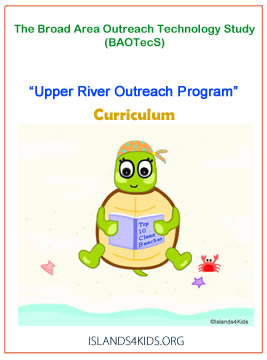


 |
|
|
| 2. |
Asian Marine Debris Research Program |
We made Miyako Island (located southwest of Okinawa, Japan) our research base for exiting marine debris from Asian countries to the Pacific Ocean. Miyako Island is an optimal location to observe marine debris originated in Southeast Asian countries before beginning to drift along the ocean current of the northern Pacific (Great Pacific Gyre), as many of them reach Washington coasts.
|
| |
Marine debris that leaves Southeast Asia takes about two years to reach the pacific coast of the United States, and another two years to return to Asia.
So, a roundtrip movement from Southeast Asian takes roughly four years.
 |
 |
|
| |
|
| |
Marin debris research program includes 2011 Japan Tsunami related follow-up course analysis. This animation was created by ISLANDS4KIDS to keep track of projected tsunami related debris drifting for the past 6 years.
There are four different courses. Three beginning at major prefectures (Iwate, Miyagi, Fukushima) and one from the Fukushima nuclear power plant hit by the tsunami.
 |
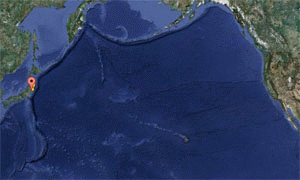
(If you are unable to view image, please refresh the page) |
|
| |
|
| 3. |
6th International Marine Debris Conference - San Diego, CA |
| |
ISLANDS4KIDS participated in 6th International Marine Debris Conference.
Our poster on "Upper River Outreach Strategy to Decrease Plastic Marine Debris" introduced conference goers of our education and outreach efforts through BAOTecS.
During our four days at the conference, we attended a number of technical session presentations and panels ('International Leadership' and 'State of the Science') that provided us with new knowledge and unconventional ways of studying marine debris.

|
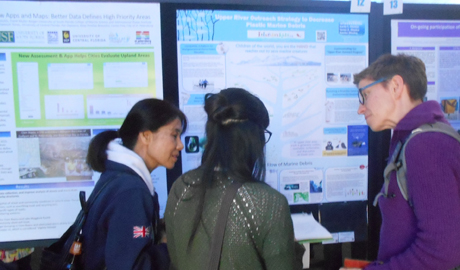 |
|
| |
|
| 4. |
5th International Marine Debris Conference - Honolulu, HI |
| |
In March 2011, the Fifth International Marine Debris Conference (5IMDC) was held in Honolulu, Hawaii in cooperation with NOAA and the United Nations Environment Programme.
We made a poster presentation and commitment speech as a summary of our marine debris research program.
 |
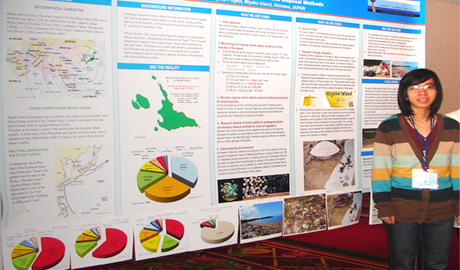 |
|
| |
|
| 5. |
Bleached Coral Research |
| These small islands are surrounded by the largest coral reefs in Japan, Taiwan and China region, and we can observe environmental and metrological impacts to the coral at the point-blank range from the island. |
| |
Yabiji is the largest coral reef in Japan, located approximately 5km (3mi) north of Ikema Island. Total area of Yabiji lagoon extends to lengths of 17km (10mi) and widths of 6.5km (4mi). The Yabiji consists of 118 coral reefs, 117 of which are named.
In Japan, Yabiji is called “the continent of illusion” because an extensive area of coral reefs appear above sea level for only a few days every year between March and May, when the spring tide (ebb tide) occurs.
Yabiji is also called “flower garden of the sea”, because corals in Yabiji are so colorful and densely propagated. According to coral researchers, over 250 different species of corals inhabit the Yabiji of Miyako Island
(Satellite View of Yabiji Photo Courtesy: USGS) |
 |
|
| |
|
| 6. |
Regional Environment Protection and Regional Cultural and Social Study |
| This island has distinctive natural, social and geographical composition as a small island, and has extensive resources for socio-environmental study. |
| |
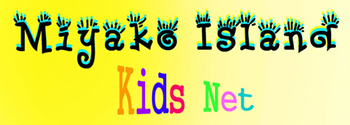 |
Miyako Island (or Miyakojima) is a small island located in Okinawa, Japan. Miyako Island is also a goldmine for research marine debris and many other environmental issues, which is why we chose the island as a case study to raise awareness of environmental issues to children and young adults worldwide. Through education, we hope to nurture younger generations to take proactive roles in finding solutions that will restore and sustain the natural beauty of the natural environment.
By compiling information on Miyako Island’s natural environment, culture, and history, we hope to illustrate how culturally rich small islands are and emphasize the importance of preserving these unique qualities. * |
|
| |
* Since Miyako Island Kids Net was established in 2010, we have been recognized by the National Diet Library: International Library of Children’s Literature of Japan. Our material has also been used by school teachers of Miyako Island to begin teaching about the island’s environmental studies, culture and history starting from elementary school.
University professors of Japan also refer to our research platform and contents as seminar topics in many courses and utilize our research protocol for field studies. In much the same way, many municipal governments of Japan are adopting our outreach platform format to improve their websites for child outreach and other environmental, cultural, historical citizen outreach programs. |
|
|
 |
 |